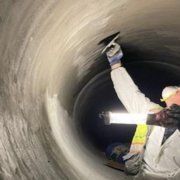Fall Back and Adjust Irrigation Systems to Save Water
The end of daylight saving time is a reminder to residents to assess their outdoor watering needs and adjust their irrigation systems to reduce water waste – an especially important step after more than two years of statewide drought. Plants simply don’t need as much water during cooler months, and they typically don’t need irrigation at all after heavy rains.
“This is a great time to make sure irrigation systems are working properly and delivering the right amount of water,” said Jeff Stephenson, a water resources manager for the San Diego County Water Authority. “After two years of drought, using water efficiently and eliminating water-wasting practices is a critical part of preserving more of our precious supply.”
Adjust irrigation systems
Outdoor watering accounts for more than half of a typical household’s water use in California. Making seasonal adjustments to irrigation controllers can help reduce water waste and lead to healthier landscapes. Water-saving practices include turning off irrigation systems when rainstorms are predicted and leaving them off for at least a week after significant rainfall.
Using water efficiently indoors and outdoors is easier than ever thanks to online resources offered by the Water Authority at www.watersmartsd.org. The site is filled with information about conservation incentives, and it includes tools and programs designed to make the most of the region’s most precious natural resource. Saving water is easier than many people realize. A few simple changes can make a big difference – especially outdoors.
The 2021 water year was the driest in California in more than a century, but San Diego County continues to have reliable water supplies due to long-term investments in water sources and infrastructure, coupled with extensive water conservation efforts. Per capita potable water use in the San Diego region has decreased by nearly 50% since 1990 as residents and businesses continue to adopt WaterSmart practices.




